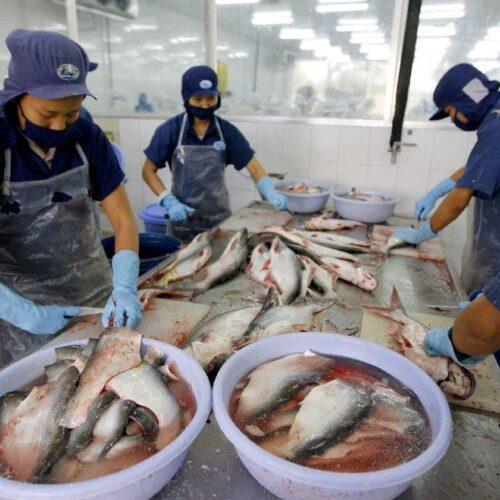Introduction
More than 80 percent of the seafood consumed in the United States is imported, and half of it comes from fish farms. Fish farmers use a variety of antibiotics and antifungal drugs to treat bacterial infections, which can be prevalent in farmed fish. But the residues of some of these drugs can cause cancer, allergic reactions and antibiotic resistance in humans. The Food and Drug Administration is responsible for screening imported seafood, but it may be missing red flags.
In order to export seafood to the U.S., foreign processors must meet the same safety regulations as domestic producers. FDA inspects some foreign seafood processors each year to ensure compliance, but these inspections only involve reviewing the food safety plans and records to ensure the processors have considered drug residues as a hazard. FDA inspectors do not usually visit fish farms to evaluate drug use or controls. In comparison, the EU reviews the country’s fish farm inspection program, the government food safety structure and actually visits fish farms to ensure seafood products meet safety requirements.
Despite recent country assessments by the FDA, the agency does not have any written operating procedures or criteria to evaluate a country’s regulatory infrastructure, farms or the capabilities of foreign laboratories.The FDA’s sampling program does not test for certain drugs that may be used abroad, but are not approved for consumption in the U.S.
The FDA tests for residues of 16 unapproved drugs but other countries importing from the same locations test for up to 57 drugs, according to a Government Accountability Office report.
Drugs that remain unapproved by FDA, such as emamectin benzoate and oxolinic acid, may be used in fish farms abroad. In 2009, emamectin benzoate was found in salmon from Chile that was already accepted for import in the U.S. There is additional concern that continued exposure to these drugs will build up antibiotic resistance.
“FDA’s sampling program is limited in scope, is not effectively implemented, and does not fully use the capabilities of FDA’s laboratories,” the GAO said.
From 2006 to 2009, FDA missed its goal for collecting import samples by 30 percent. During the same years, the FDA failed to take advantage of inspection services offered by the National Marine Fisheries Service, within the Department of Commerce. From 2005 to 2009, the FDA and NMFS duplicated efforts, inspecting 315 of the same facilities.
The GAO recommends that the FDA consider adopting safety controls done by other countries, like expanding its sampling program and collaborating more with the NMFS.
FAST FACT: Over half of seafood products originate in developing countries. The top seafood exporters to the U.S. are China, Thailand, Canada, Indonesia, Vietnam and Ecuador.
Read more in Environment
Environment
Persistent black lung, old scourge of coal, found in autopsies of most Massey miners
At Upper Big Branch, examination reveals 17 of 29 had the preventable disease. Decade’s overall death toll in U.S.: an estimated 10,000
Environment
Fact Check: Permitting some fudging on oil stats
Obama official, defending pace of drilling approvals, cites data selectively


Join the conversation
Show Comments